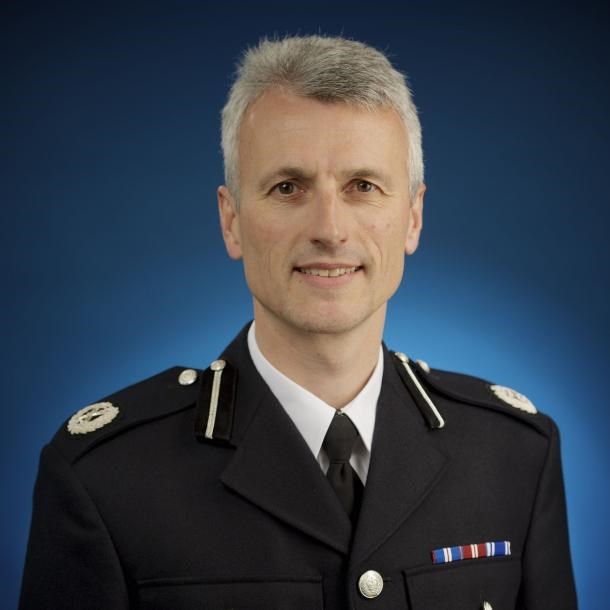
16 Apr 2018
Police Chiefs' Blog: ACC Gary Cann - Many reasons to be proud of our internationally renowned counter terrorism command structures
In a report published last week, Her Majesty's Inspectorate of Constabulary and Fire and Rescue Services (HMICFRS) commended our command of extreme-threat counter terrorism operations.
UK policing’s command of complex, extreme-threat counter terrorism operations has been recognised as world leading in a recently published report by Her Majesty's Inspector of Constabulary (HMICFRS). It describes our arrangements and capabilities as being ‘probably unmatched internationally’.
What makes our approach so different to many other countries is that in the event of such a threat, we have the ability and willingness to bring together all the major responders to work as one to protect the public.
This means local police and emergency services, CT specialists, security and intelligence agencies and specialist military capabilities work under a national police command structure.
In practical terms, it means that when an attack takes place we are able to react incredibly quickly, to both stop an attack in progress and mitigate the threat to the public. You will, regrettably, have seen this in action far too often over the summer of 2017. As well as the rapid policing response to the Manchester, Parsons Green and Finsbury Park attacks, this was particularly apparent in the Westminster and London Bridge attacks, where police were able to mobilise firearms officers and stop the attacks within minutes.
The role of the Counter Terrorism Commander in such an incident is key, as he or she will be responsible for commanding and coordinating the tactical response from a Counter Terrorism Police Operations Room (CTPOR). All CT commanders are chief officers and have received extensive training before taking up the role.
This intensive and high-pressure training includes considerable ‘live’ exercising to simulate situations such as firearms attacks, bombings, hostage situations and man hunts. These are based in a CTPOR and our commanders direct and coordinate the work of specialists from all the other agencies taking part in the operation.
Once trained, they keep up-to-date through participating in national exercising – most recently the Scotland-based ‘Border Reiver’ exercise - and other development opportunities.
Crucially - and this is another factor that makes the UK different – we are not restricted by existing policing boundaries. Chief constables have formally agreed that the Senior National Coordinator (SNC) for Counter Terrorism will take national strategic police command for the resolution of an extreme terrorism threat. The SNC will appoint a CT commander to take charge of the combined resources addressing the threat, wherever that may be located.
Again, we have seen the benefits of this structure in 2017, in the wake of the Manchester bombing. Both in terms of the immediate aftermath and subsequent investigation, which involved the mobilisation of huge numbers of officers and staff to the North West to cope with the demand. Having SNC in London being able to appoint and support a commander in Manchester with resources from across the national network meant that GMP was able to better cope with the initial stages of the largest CT investigation they have ever carried out.
The role of the CT commander is relatively new. The first course was held in 2009, and since then we have had a rolling programme of training, complemented by large scale exercises where skills are honed and decision-making tested under pressure.
Once qualified, the officers join a cadre, which means they can be deployed to any incident anywhere in the country. In the event of a real CT incident – not all of which will be made public - the commander will work to the SNC's strategy, while the local force appoints a gold commander who will be responsible for the wider implications.
Over recent years we have improved the way we work with the security service and others. Key to this has been introducing and refining the training for our commanders and we welcome the recent contribution of HMICFRS in assessing our progress.
They have made recommendations around improving selection of candidates for training, formalising continuing professional development, and increasing knowledge of the role within the police service.
All of these points are fully accepted and have already been addressed, so we can further improve a vital policing system which the HMICFRS notes ‘deserves much credit’.
My thanks go to all the officers and staff, from across all the contributing agencies, who have helped get us to this point.
I am glad that our efforts to improve the way we respond to CT incidents in this country have been recognised, but the events of 2017 starkly demonstrate that we must not rest on our laurels. Each tragic death as a result of terrorist activity spurs us on to keep adapting and improving our procedures. Not only because we want the UK to remain a world leader in the fight against terrorism, but also because it helps us save lives and better protect the public.
National Police Chiefs’ Council Lead for CT Command and Control, Assistant Chief Constable Gary Cann
Contact information
Communications office
By phone: 0800 538 5058
By email: press.office@npcc.police.uk


